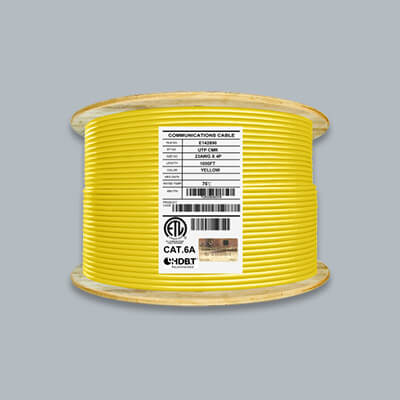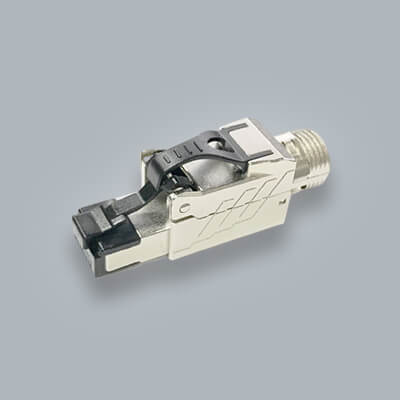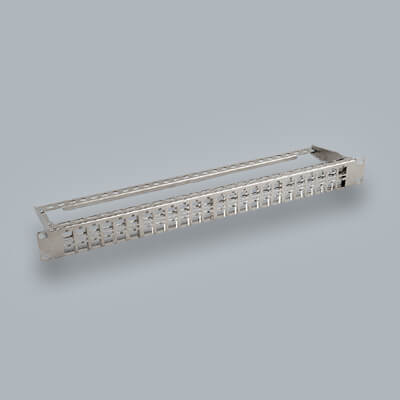Flat Ethernet Cable: What Is It?

One of the newer cable types gaining traction today is a flat ethernet cable. This type of cable has become more and more prevalent in use in home and office networks. Not only is it popular among end users but large corporations are beginning to ship them along side their network components. When deciding whether to purchase a flat cable many people want to know how good a flat cable really is? We'll attempt to answer that and more by putting flat ethernet cable to the test.
Introducing Flat Ethernet Cable
When Ethernet cables were first introduced they were actually made using coaxial cable. This early invention was deemed too difficult to use and was later changed to the more popular copper cable design you see today with twisted pairs. This gave the cable some more flexibility and was able to be installed over short and long distances when needed. The twisted pair cables had a round look to them because of the way all the components inside were structured. Twisting the round wires around each other then adding insulation around them was easier to hold everything together in a circular shape. By having a round jacket you could also fit wires with different insulation and wire gauge sizes. This then became the go to design and the rest is history. Along the way flat cables slowly started to trickle in to the market. They took advantage of the smallest gauge wires you could use while still being able to get a connection.
What Makes a Flat Ethernet Cables?
Flat ethernet cables use some of the smallest gauge size wires in the market. They are often created with 32AWG size wires making them very thin. More thin than even 28AWG cables which are becoming more and more popular as well. Instead of the pairs being wrapped in a circle shape they are laid out in a row. The pairs are usually staggered in a row for better protection against any crosstalk that can occur. Flat patch cables are then typically created with molded boots and RJ45s that give you the ability to plug in to any ethernet port. This then leads us to where can you use a flat cable.
Where To Use Flat Ethernet Cable?
Flat cables are popular because of their convenience. They can be used just about anywhere a typical cable would be used for. You can plug them in to computers, routers, modems, network printers, faxes, voip phones, and gaming consoles. Because of their flat shape they are easily placed along side flat surfaces such as under the carpet, office furniture and walls. Depending on the cable category you choose you can often expect to achieve up to gigabit ethernet speeds under ideal conditions. Some of the most common flat cables are in Cat5e and Cat6 cables categories which will give you enough speed to do that.
Flat vs Round Ethernet Cable
With the advancements in technology just about everything we use is becoming smaller. Even our patch cables. But in networking terms it isn't always better. The thing that is convenient about flat ethernet cable is the size of the wires and the ability to lay your cable flat on surfaces. Which is why it is the go to choice for installing under carpet. Flat cables are also easily coiled for simple storage and placement. This is another reason you see manufacturers such as google include flat ethernet cables with their routers. The other thing is that they look pretty sleek as well. But where does this leave round cable?
Round ethernet cable is your traditional cable that was created in the 80s. It is versatile and still does it's job very very well. So which cable type should I choose for my network? This question depends on a couple different things. Here's a couple questions you want to ask yourself:
- Where am I installing the cable?
- How long of a cable do I need?
- What types of devices am I using?
By answering these three questions this will give you a better understanding of which cable to choose.
Flat cables are great for installations in areas where you need to go under the carpet or flooring. They lay flat so they are easily hidden under carpet without any noticeable lumps. They are also great for short runs to your router. Both round and flat cable are absolutely ok to use in short runs for example between your router to modem. There will be little performance differences between the two in this regard.
To test this we installed a flat vs round ethernet cable from the rj45 jack in a raceway to a test computer and network. The results were very close in the end. The first test was done using 5ft of patch cables. The test was done using speedtest.net
The round cable had a ping of 3 ms, download speeds of 47.41 mbps and upload speeds of 46.98 mbps.
The flat cable had a ping of 3 ms, download speeds of 46.34 and upload speeds of 46.87 mbps.
The next test was done running a 25ft patch cable.
The 25ft round cable had a ping of 4 ms, download speeds of 47.55 mbps and upload speeds of 46.92 mbps.
The 25ft flat cable had a ping of 3 ms , download speeds of 47.46 mbps and upload speeds of 47.05 mbps.
You can see again that the speeds were pretty close. At shorter distances like this using either of the cable types is fine. However for an overall better performance we recommend a round ethernet cable.
Why Round Ethernet Cable?
The reason we like to recommend round ethernet cable is because of the ability to have larger AWG size wires, more copper and more insulation. All of these materials help in better signal quality compared to smaller gauge sizes such as 32AWG. You might see that the speed results were pretty close in comparison but the reality is that the more copper and insulation you can have in a cable the better.
The slimmest cable you want to use is ideally is 28AWG. Over the years this cable has advanced and can now even be used for PoE++. Something that just shouldn't be planned for with a flat ethernet cable. The reason being is the small 32AWG conductors and lower amount of insulation. Round ethernet cable also gives you more jacket options. So if you need to run cable in the walls then a solid round twisted pairs cable is the best cable of choice.
The other reason for choosing round cable over flat is that in some flat cables the conductors might not be twisted and instead have a flat profile in a row. This diminishes performance against crosstalk. The reason crosstalk is not good is that it gives off electronic noise to your signal causing you lower bandwidth. For the maximum performance potential you want your cables wires to be twisted with bare copper for greater performance against crosstalk. The higher the twist rate the better
This is why you will see higher twist rates in cable such as Cat6 and Cat6A cables.
The other thing with flat cables is that they give you benefits with installation under surfaces. But there are also ways you can take advantage of round cable and keep it out of sight. There are raceway you can use such as D-line raceways or wall cord raceway which can fit in to the baseboard of your walls. They will hide your cable and protect it at the same time.
To Summarize:
- Flat cable is great for convenience and short runs
- Suitable to be installed under carpet
- The wires are not always twisted in flat cable
- We recommend round cable for better performance against crosstalk
- If you are using PoE devices round cables are your friend
- There are ways you can use round cables and hide them such as conduit or raceway
Final Thoughts
We hope this helped in your journey to choosing a flat vs round cable. Both of these cables can be used for everyday application in your home or office especially at a shorter cable length. If you want the absolute best opportunity for higher speeds a round cable is better constructed and recommended.










Is there a gauge or rating necessary to run a flat ethernet under carpet which will be walked across occasionally
This blog is really useful for everyone. Always share this type of blog with us.
I bought a 50 ft flat cath 8 so this info is very helpful thanks so much 👍🏼😀